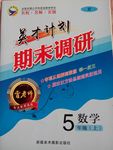题目内容
Drink drivers could be prohibited from driving under the influence if new technology from Nissan is introduced.
The Japanese car maker has developed a new odor (气味) detection system designed to prevent drivers from operating a car if they are over the legal limit. The system works by using a series of sensors (传感器) to detect the level of alcohol the driver has consumed.
A high-sensitivity alcohol odor sensor is built into the gear stick (变速杆), which is able to detect the presence of the driver’s palm as he or she attempts to start driving. If the alcohol level detected is above a pre-determined limit, the system automatically locks the transmission(变速器), immobilizing the car. A voice alert is also issued via the car navigation system telling the driver that he or she is over the limit.
Extra sensors are also placed in the driver and passenger seats and a warning is issued if these sensors detect the presence of alcohol in the air inside the vehicle cabin.
While still in the developmental stage the concept of drink driving detectors being built into cars has generally been welcomed by many drivers.
Nissan said the technology is part of a project aimed at halving the number of fatalities (灾祸) and serious injuries in Nissan cars by 2015 compared to 2005 levels.
The detection system works _______________.
A. by detecting the smell of alcohol in the vehicle cabin
B. by measuring the volume of the alcohol in vehicle cabin
C. by detecting the weight of the school in the vehicle cabin
D. by using a car navigation system
What do we know about the detection system?
A. The detection system is still in the developmental stage.
B. The new technology from Nissan has been introduced.
C. The driving detectors are being built into cars.
D. The system has already been used in some car companies.
The driver’s attitude toward the detection system is that of _______________.
A. annoyance B. welcome C. unconcern D. doubt
What’s the main idea of the passage?
A. Nissan will release drink-proof cars.
B. Traffic accidents will be decreased.
C. A project halving the number of accidents.
D. A new odor detection system.
【小题1】A
【小题2】A
【小题3】B
【小题4】A
解析:
略

 名师点拨卷系列答案
名师点拨卷系列答案 英才计划期末调研系列答案
英才计划期末调研系列答案Saying “thank you” is probably the first thing most of us learn to do in a foreign language. After all, we’re brought up to be polite, and it is important to make a good impression upon other people — especially across national divides.
So, what exactly are you supposed to say when “thank you” is only the 20th most popular way to express gratitude? According to a recent survey, 19 other ways of expressing appreciation finished ahead of “thank you” in a poll of 3,000 people.
Pollsters(民测调查员) found almost half of those asked preferred the more informal “cheers”, while others liked to use such expressions as “ta”, “great” and “nice one”.
So, just what is the appropriate form of words to express your thanks?
Fortunately, the clue is in the language itself. “Cheers”, despite its popularity, is considered an informal way to say thank you — and this is a definite clue as to when you can best use it.
For instance, when going for a drink with friends, a smile and a “cheers” by way of thanks is not only appropriate to the situation, it is also culturally accurate.
“Ta”, originated from the Danish word “tak”, was the second-most popular expression of thanks, and is also commonly used in informal situations, along with phrases such as “nice one”, and “brilliant”. Interestingly, one word that didn’t make it into the top 20 was “thanks”, Thank you is shorter, more informal cousin.
“Thanks” can be useful, as it is able to bridge the divide between the formality of “thank you” and the downright relaxed “cheers”.
Certain words can double as an expression of thanks as well as delight. Again, the words themselves offer the clue as to when best to use them.
For example, words like “awesome”, “brilliant” and “you star” featured highly in the new poll and they can hint at both your pleasure at someone’s action, as well as serving to express your thanks. If you are on the receiving end of a “new” thank you, you can respond with a simple “no problem”, or “sure”.
Of course, in certain circumstances, a simple wave, nod or smile may be appropriate. For instance, if a car driver slows down to let you cross the road, simply raising your hand in acknowledgement is enough to show that you appreciate the driver’s consideration.
Sometimes, formality is necessary, and “thank you” is still the best choice in such situations. But students should not worry about when exactly to use certain expressions.
Many people in Western countries are worried that good manners are in decline. People are tired of seeing their acts of kindness and service pass without comment. So don’t think your “thank you” is clumsy or awkwardly formal. The chances are, if you said “thank you”, you made someone’s day. You star.
【小题1】We can tell from the results of the poll that __________.
| A.people are unconcerned about politeness nowadays. |
| B.“thank you” remains the best expression of gratitude. |
| C.there is a variety of expressions of appreciation. |
| D.there are more formal expressions than informal ones. |
| A.Thanks. | B.Sure. | C.Nice one. | D.Cheers. . |
| A.show their gratitude to others. | B.behave themselves well. |
| C.continue their acts of kindness. | D.stop worrying about bad manners. |
| A.How to Appear More Polite . | B.Ways to Show Gratitude. |
| C.Never hesitate to Say “Thank You”. | D.Good Manners in Decline! |
Drunken driving—sometimes called America’s socially accepted form of murder—has become a national epidemic(流行病). Every hour of every day about three Americans on average are killed by drunken drivers, adding up to an incredible 250,000 over the past ten years. A drunken driver is usually referred to as one with 0.10-blood alcohol content or roughly three beer glasses of wine or shots of whisky drunk within two hours. Heavy drinking used to be an acceptable part of the American manly image and judges were lenient in most courts, but the drunken killing has recently caused so many well-publicized tragedies, especially concerning young children, that public opinion is no longer so tolerant(忍受).
Twenty states have raised the legal drinking age to 21, reversing a trend(逆转潮流)in the 1960s to reduce it to 18. After New Jersey lowered it to 18, the number of people killed by 18—20-year-old drivers more than doubled, so the state recently upped it back to 21.
Reformers, however, fear raising the drinking age will have little effect unless accompanied by educational programs to help young people to develop “responsible attitudes” about drinking and teach them to resist peer pressure to drink.
Though new laws have led to increased arrests and tests in many areas already, to a marked drop in accidents, some states are also punishing bars for serving customers too many drinks. A bar in Massachusetts was fined for serving six or more double brandies to a customer who was “obviously drunk” and later drove off the road, killing a nine-year-old boy.
As the accidents continue to occur daily in every state, some Americans are even beginning to speak well of the 13 years national prohibition(禁令)of alcohol that began in 1919, which President Hoover called the “noble experiment”. They forgot that legal prohibition didn’t stop drinking, but encouraged political corruption(腐败)and organized crime. As with the booming drug trade generally, there is no easy solution.
1.What can be inferred from the fact of the traffic accidents in New Jersey?
|
A.Young drivers were usually bad. |
|
B.The legal drinking age should be raised. |
|
C.Some drivers didn’t surprise the legal drinking age. |
|
D.Drivers should not be allowed to drink. |
2.The underlined word “lenient” in the first paragraph means .
|
A.merciful |
B.cruel |
C.serious |
D.determined |
3.As regards drunken driving, public opinion has changed because .
|
A.judges are no longer lenient |
|
B.new laws are introduced in some states |
|
C.drivers do not appreciate their manly image |
|
D.the problem has attracted public attention |
4.Which of the following statements best shows the writer’s opinion of drunken driving?
|
A.It is difficult to solve this problem. |
|
B.It may lead to organized crime. |
|
C.The new laws can stop heavy drinking |
|
D.There should be no bars to serve drinks. |